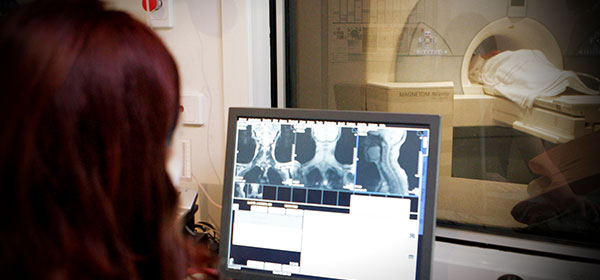The peak body for radiologists has vowed to continue fighting to have a 20-year freeze on Medicare rebates for diagnostic services lifted, saying it disadvantages pensioners.
The Australian Diagnostic Imaging Association (ADIA) is fuming that the Federal Government appears to be ignoring its pleas to widen subsidies to help millions of elderly people access potentially life-saving scans.
“The Government continues to pretend it has fixed the problem by indexing just seven per cent of the radiology items listed on Medicare – and then not until 2020,” ADIA Senior Policy Adviser Chris Kane told YourLifeChoices.
“That leaves almost 830 Medicare rebates for vital radiology services such as MRI, X-rays and ultrasound scans frozen exactly where they were in 1998. That’s why we are not letting up in our campaign to get the Government to keep its promise to Australian patients.”
In February this year, Australian radiologists escalated a campaign against the Turnbull Government’s inaction on Medicare with a new national television commercial.
The campaign reported that more than nine million Australians need radiology each year, with 26 million radiology scans and services undertaken. One in 10 GP visits results in a referral to a radiologist, with radiology essential for diagnosing, treating and managing all cancers, ADIA said.
The group has invited YourLifeChoices readers who have not been able to afford radiology scans to post their experiences on the ADIA Facebook page.
ADIA President Dr Siavash Es’haghi said the Government must be held responsible for the impact its policies are having on Medicare and patient care.
“Before the 2016 election, the Coalition collaborated with ADIA on a package of structural reforms and signed an agreement to end the 20-year freeze on Medicare rebates for radiology services when the GP rebate freeze ends,” Dr Es’haghi said.
“But the Government has not kept its promise. The GP rebate freeze is set to end on 1 July 2018, while more than 800 life-saving radiology items listed on Medicare remain frozen at 1998 levels.
“We are launching this campaign because our politicians have to realise that, if they continue to ignore the problems in Medicare, only patients [who] can pay large gaps will be able to afford the X-rays and scans they need,” he said.
“They know what the problems are. The Turnbull Government commissioned its own independent report by Deloitte that found a $711 million black hole in annual Medicare funding for radiology.
“Patients are suffering. The funding black hole means that 10 per cent of Australia’s most vulnerable patients – pensioners and concession cardholders – are not able to access bulk-billed X-rays and scans, and that more patients each year are forced to pay gaps. Average gaps are at $100 and are still rising.
“Around 300,000 Australians are forgoing treatment every year because of cost. We are already creating a two-tiered health system between the haves and the have-nots – and that’s not what Medicare is supposed to be.”
Mr Kane added that making scans harder to access “means that older Australians are having to wait longer to be diagnosed, or are missing out on being diagnosed until it’s too late to catch the condition when it’s most treatable.
“We know that the earlier conditions are diagnosed, the easier and less expensive they are to treat. When diagnosis is left too late, patients need more complex treatment and often require extensive hospital stays. This is obviously more expensive to the patient and to the Government’s health budget,” he said.
Dr Es’haghi said ADIA would continue escalating its campaign until the Turnbull Government delivered on its promise.
“The nine million Australian patients who rely on radiology every year deserve to be treated better than this,” he said.
Have you been left out of pocket from X-ray costs? Do you feel you would have benefited more from a health diagnosis if you had been able to access subsidised scan?

